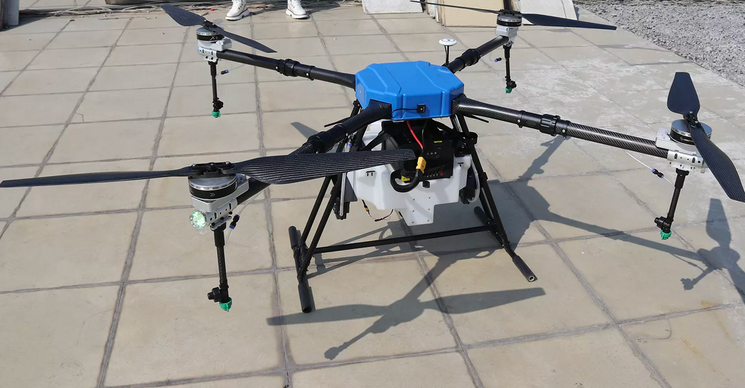Irrigation facilities that emit fog, digital maps that collect information about more than 30 million plots in the city, drones that sprinkle pesticides on the backs of leaves… On August 22, the reporter saw at the 2022 Wisdom Expo that many new projects of smart agriculture in the exhibition area were amazing.

The city’s first Ganoderma lucidum automatic fog system
Into the Fuling exhibition hall, a planted ganoderma lucidum, smoke curling white smoke display case once attracted the attention of reporters.
“This is the Ganoderma lucidum automatic mist control system we just put into use this year, which is the first of its kind in the city!” Enterprise director Xia Hongbin warmly introduced.
In 2019, Xia Hongbin began planting ganoderma lucidum in Fuling’s Dashun town. Ganoderma lucidum likes dampness, before the base using sprinkler irrigation facilities, Xia Hongbin always felt not ideal, “although the water is large, but the moisture effect is still poor.”
This year, Xia Hongbin bought equipment for debugging and assembled an automated ganoderma ganoderma fog system. In simple terms, the water is pressurized and impinged on to create a mist of droplets smaller than 20 microns. When the humidity sensor detects that the humidity is lower than 60%, the mist system will automatically start to improve the air humidity.
Since the device was put into use this year, the base of Xia Hongbin has saved more than 30 percent of water, and the growth rate and yield of ganoderma lucidum have both increased by more than 10 percent. “The growing ganoderma lucidum flowers are smooth and beautiful, and the quality has been greatly improved.”
The city’s first “plot level” agricultural base map formation
On the display screen of the exhibition hall of the Municipal Commission of Agriculture and Rural Affairs, a digital map of the city’s agricultural industry is playing in a loop.
According to the exhibition staff, the Chongqing Agricultural industry digital map project is led by the Municipal Agriculture and Rural Affairs Committee of the NPC, and jointly constructed by the Municipal Agricultural Information Center and the Chinese Academy of Sciences’ Aerospace Information Innovation Research Institute, Beijing Jiagtiandi Technology Co., LTD., Chongqing Guandu Technology Co., LTD.
At present, the project has achieved initial results. “In chongqing cloudy foggy mountainous complicated environment, climate and the surface we established a set to block as the basic unit of agricultural remote sensing data intelligent computing model, realized with more than 3000 accurate extraction of agricultural land in the city, and get the position of each plot, altitude, slope, area, such as attribute data, build up the foundation of the agricultural industry regulatory reproduction.” “The staff member said. Relying on these data, at present, the city’s rice, rape, maize, citrus and other crops planting distribution map has been formed.
Drones with “eyes”
“Our UAV is equipped with ‘eyes’, which can imitate human vision and realize autonomous flight defense.” In the digital agriculture section of the Banan exhibition hall, Yuan Hua, head of Chongqing Jimu Zhicheng Technology Co., LTD, pointed to two cameras on the drone’s head and told reporters.
At present, unmanned aerial vehicles (UAVs) fly defense is nothing new, but this new machine, which came out last year and was promoted this year, has become the designated UAV for the city seed Station this year. Its highlight lies in that it is more adapted to the complex terrain of hills and mountains.
Different from the 3D modeling technology of most UAVs, Polar UAVs innovative binocular vision technology allows the machine to simulate human eyes, which can automatically identify the terrain during operation and realize autonomous operation. “In mountainous and hilly areas, when the slope exceeds 45 degrees, the 3D modeling is prone to be inaccurate, resulting in the deviation of the course. But by mimicking human vision, the accuracy is much higher.” Yuan hua said.
Not only that, the machine is currently capable of atomizing particle sizes below 50 microns, and spraying even smaller pesticide particles. “The smaller the particles, the longer they float in the air, and they stick to the back of the leaf under the action of the wind,” Yuan said. In this way, the pain points of UAV flying prevention in fruit trees and tea trees can be solved to a large extent.






Please sign in to comment
register